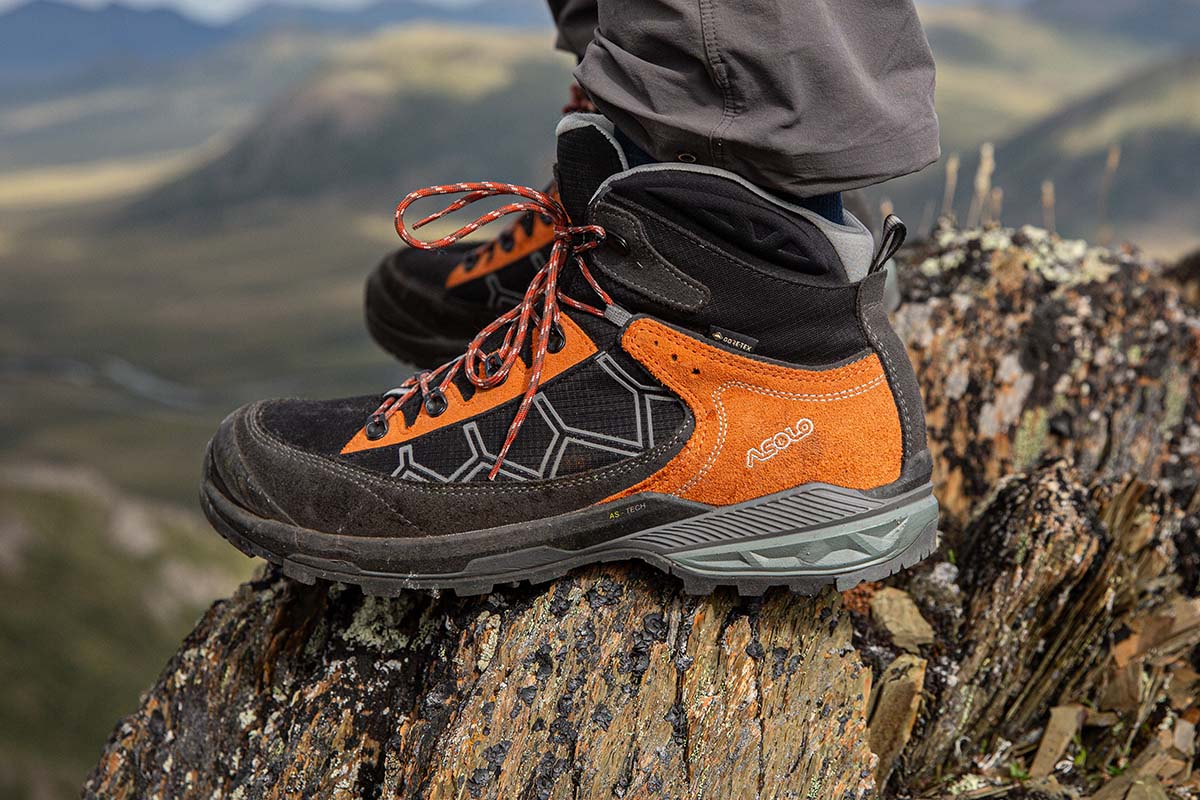
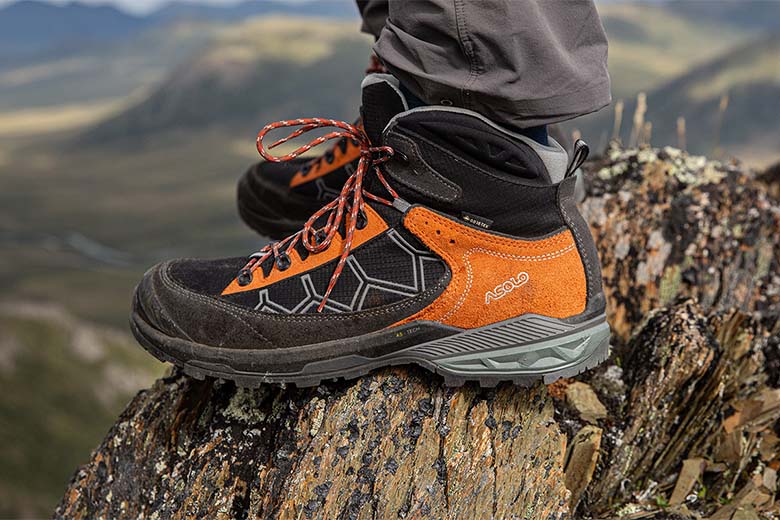
Price: $275
Weight: 2 lb. (men’s)
Waterproof: Yes (Gore-Tex)
What we like: Great balance of comfort and technical performance; well built with high-quality materials throughout.
What we don’t: Pricier than many competitors; laces are prone to loosening, even when double-knotted.
See the Men's Asolo Falcon Evo GV See the Women's Asolo Falcon Evo GV
In many ways, the Asolo Falcon GV embodies one of the biggest trends in modern hiking footwear: a little less weight and support than a traditional heavyweight boot but with the technical chops to get the job done both on and off the trail. I recently tested the latest Evo version in Canada’s rugged and unforgiving Yukon and Northwest territories and became a quick fan of the boot’s light but capable personality. It doesn’t come cheap at $260, but overall, the Falcon is well built, extremely comfortable right out of the box, and can handle just about anything you throw at it. Below are my experiences with the Falcon Evo GV’s performance. To see how it stacks up to the competition, check out our article on the best hiking boots.
It’s not often you find a technical hiking boot that’s super comfortable out of the box and requires little to no break-in period, but the Asolo Falcon Evo GV accomplishes just that. Despite this being my first experience with Asolo boots, I came away highly impressed from the outset: They’re nicely cushioned throughout, have a sock-like fit that’s snug and effective at sealing out debris, and boast enough padding underfoot to protect against sharp rocks and other protrusions. Additionally, the rubber toe cap is great at fending off direct hits to the front of the foot, and there’s enough arch support that my feet haven’t grown achy even on long, mileage-heavy days. I did find the toe box to be slightly narrow for my wide feet at first, but it wore in nicely after a few hikes and has gone entirely unnoticed since.
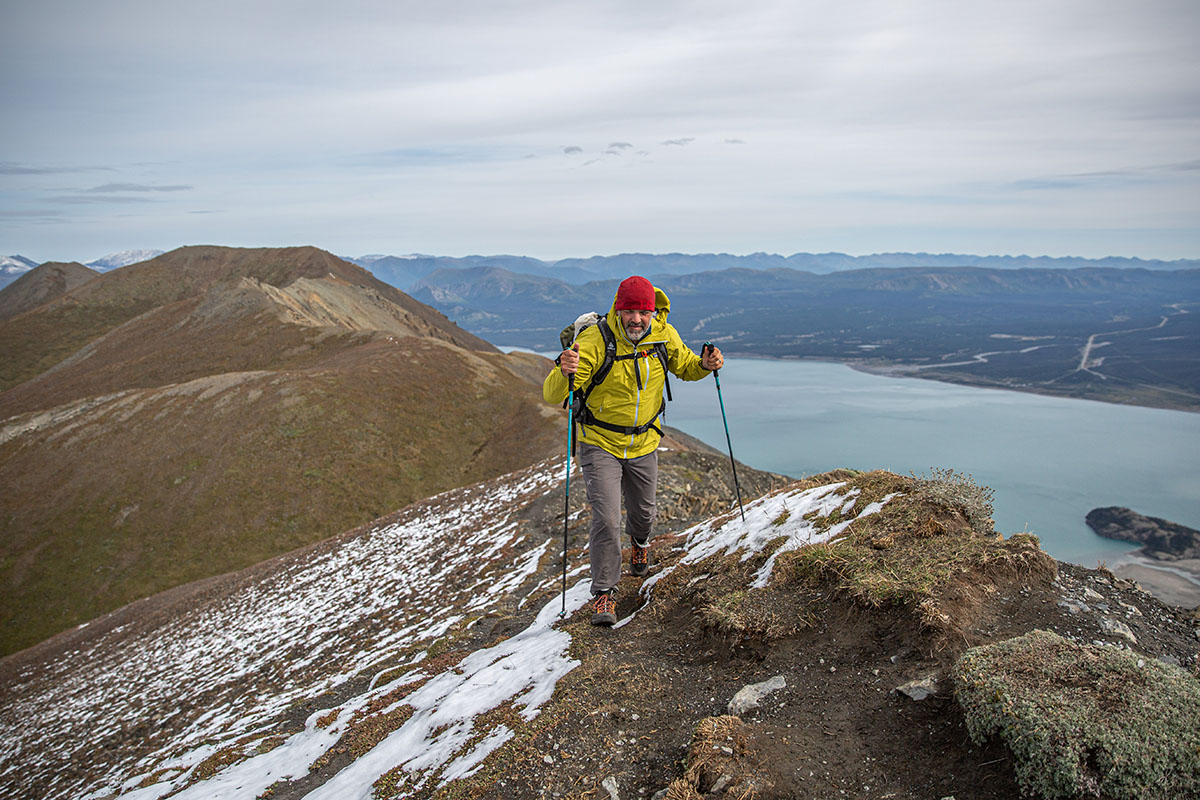
No boot is perfect, however, and the Falcon Evo GV is no exception. First, while the midsole offers a relatively cushy ride, particularly at the heel and directly underfoot, I found it to be noticeably firmer toward the front—reminiscent of an approach shoe. Importantly, I didn’t experience any hotspots or blisters, but there’s a discernible different in overall comfort between the back and front. I also found the sidewalls somewhat vulnerable to rock strikes, especially along the inside edge by the big toe. This isn’t exclusively a knock on the Falcon—most boots I’ve worn have the same issue—but I do wish Asolo had extended the rand a little farther to boost protection.
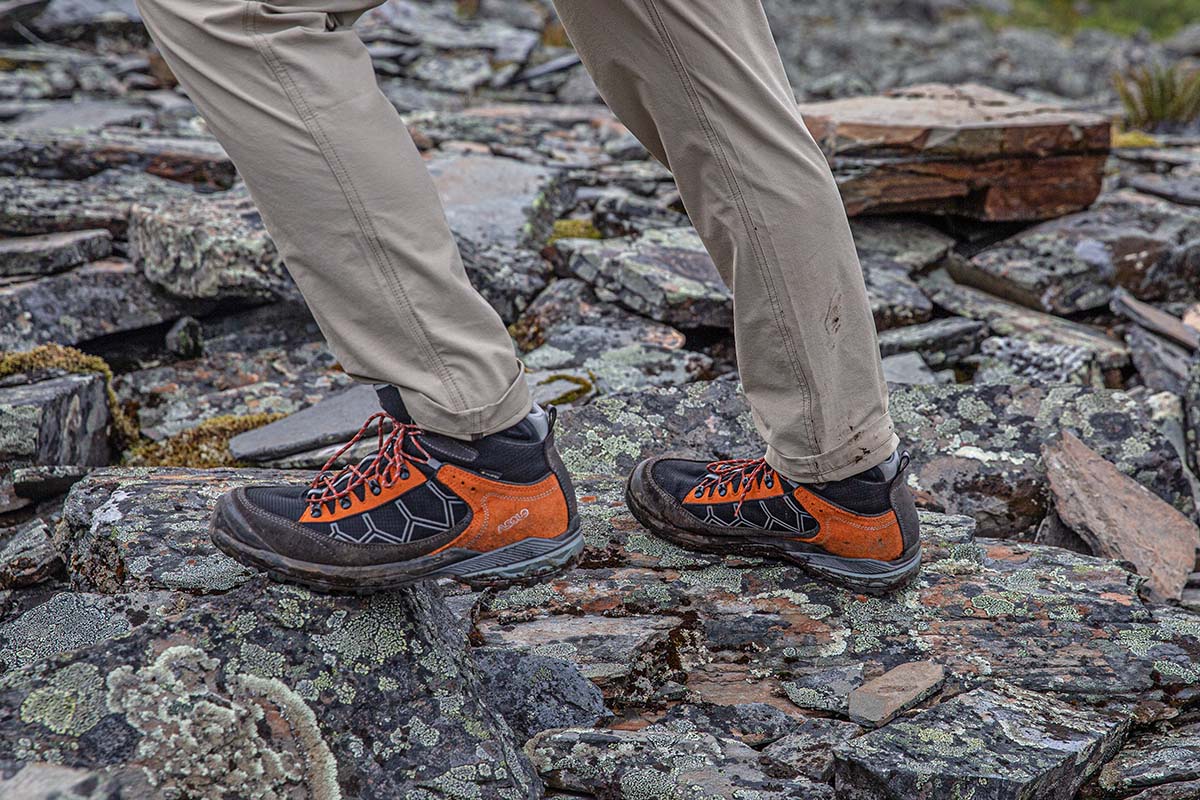
At 2 pounds 2.6 ounces for the pair, the Falcon is relatively light but punches above its weight. For comparison, the Salomon X Ultra 4 Mid GTX weighs less at 1 pound 14 ounces but is thinner underfoot and built more like a hiking shoe with a higher cut. Closer comparisons include the popular Lowa Renegade Evo GTX Mid at 2 pounds 2.2 ounces and the all-leather La Sportiva Nucleo High II GTX at 2 pounds 1.6 ounces. Whichever way you slice it, the Falcon Evo GV is a lightweight boot that doesn’t compromise on performance or build quality. And importantly, I’ve never noticed the weight of the boots underfoot, even on long and high-mileage days with a very heavy (50-plus-lb.) pack.
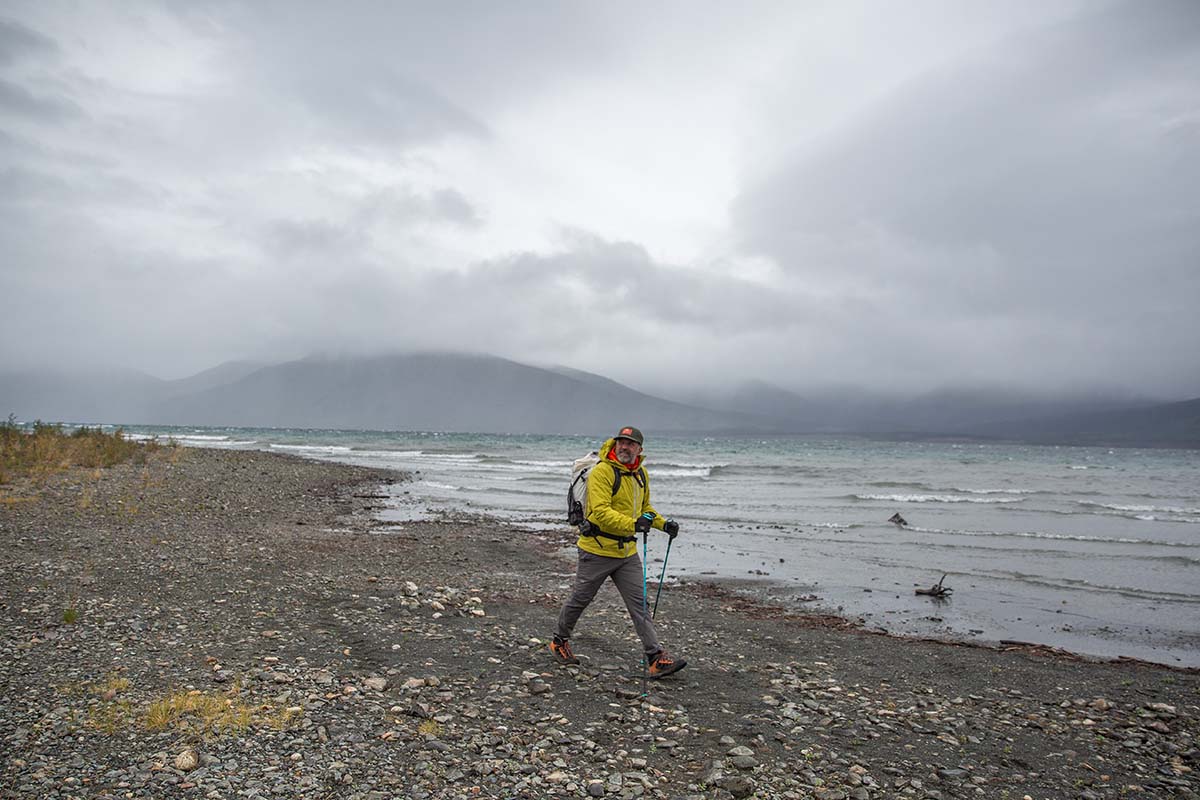
Vibram is the gold standard when it comes to grip, and the Asolo Falcon Evo GV's Megagrip compound has performed predictably well throughout testing. For reference, the boots have been exposed to everything from loose shale to steep granite, coastal riverbeds, wet tundra, and even some snow in Canada’s Yukon and Northwest territories. Regardless of the terrain, the Falcon has proven very predictable and easy to trust, especially when navigating rocky surfaces like scree fields and boulders. It’s worth noting that the Falcon’s lugs aren’t the most aggressive out there, and I did experience some slippage when navigating soft, clay-like mud along a riverbed. But on the bright side, the lugs are spaced widely enough that the mud quickly sloughed off—no stomping or scraping required.
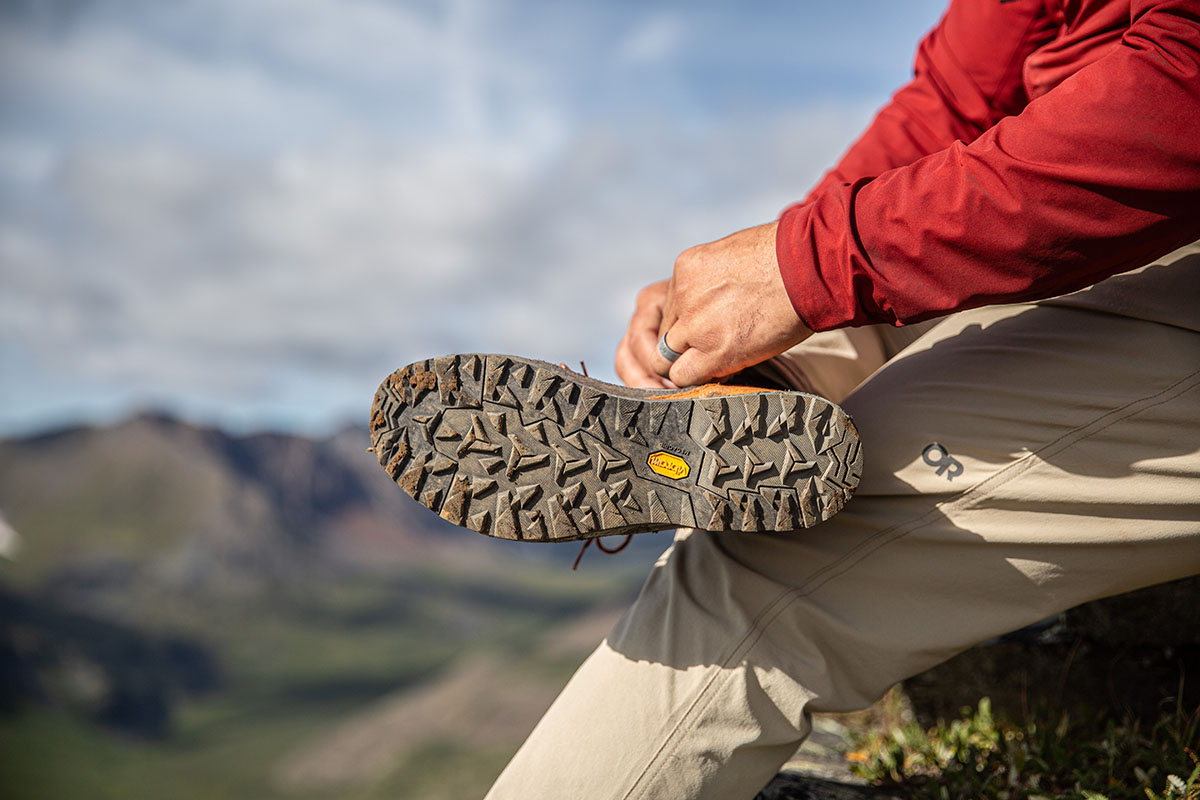
In terms of stability and support, the Falcon Evo GV handily exceeded my expectations for a lightweight hiking boot. For reference, my own weight plus a loaded-down backpacking pack can easily tip the scales at over 280 pounds, but the Falcon managed it with aplomb. The well-cushioned collar provided ample support while still offering enough flexibility to scramble up steep slopes or pick my way down loose trails without any restriction or discomfort, and I had zero issues with security or slippage inside the boots. My only complaint has to do with the laces, which are prone to coming untied throughout the day, even when double-knotted. I also wish Asolo had included an additional eyelet to really cinch down the ankle, but overall, I found the Falcon to be plenty supportive and stable on most terrain.
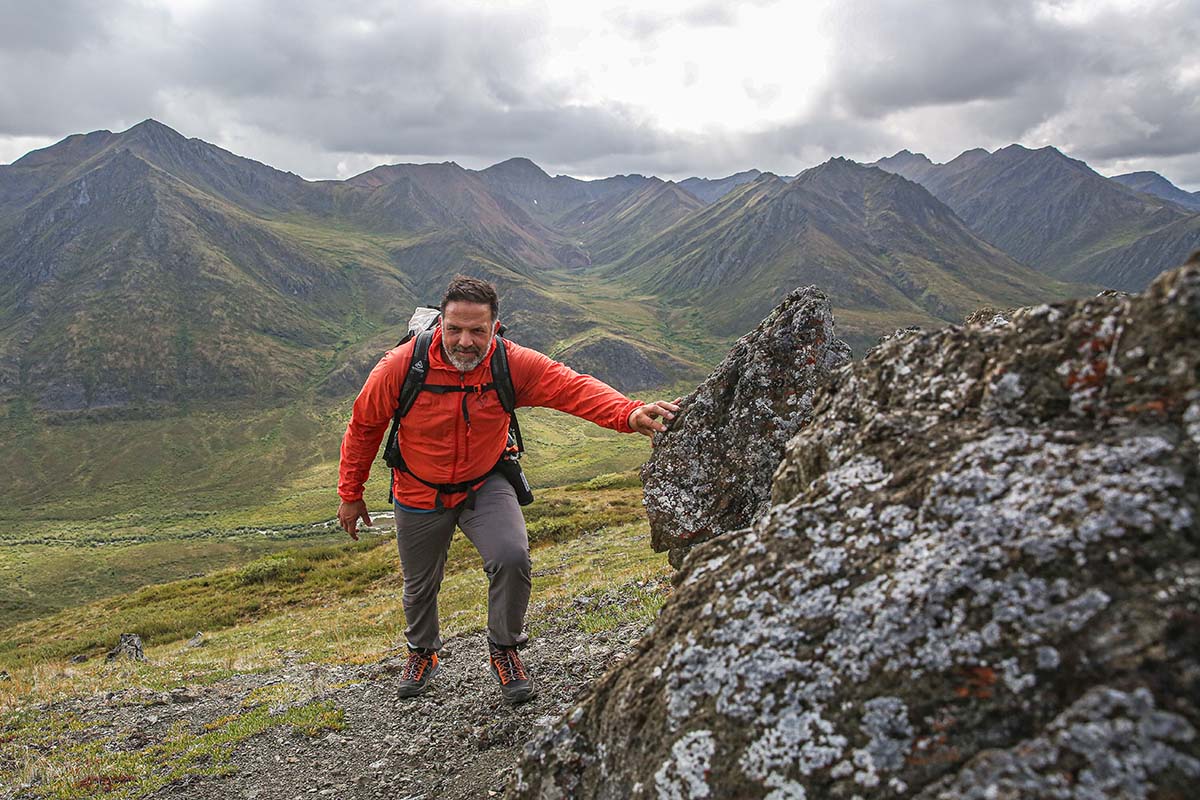
Premium hiking boots often have premium waterproofing, and the Asolo Falcon is no exception. With a proven Gore-Tex Extended Comfort lining, the boots kept my feet dry during multiple water crossings and when walking through heavy mud. It's worth noting that the nylon portions along the top and sides of the boot did grow dark with moisture after being submerged for extended periods in glacial rivers, and I was able to feel the cold creep through to my feet. However, upon removing the boots, my socks were still completely dry.
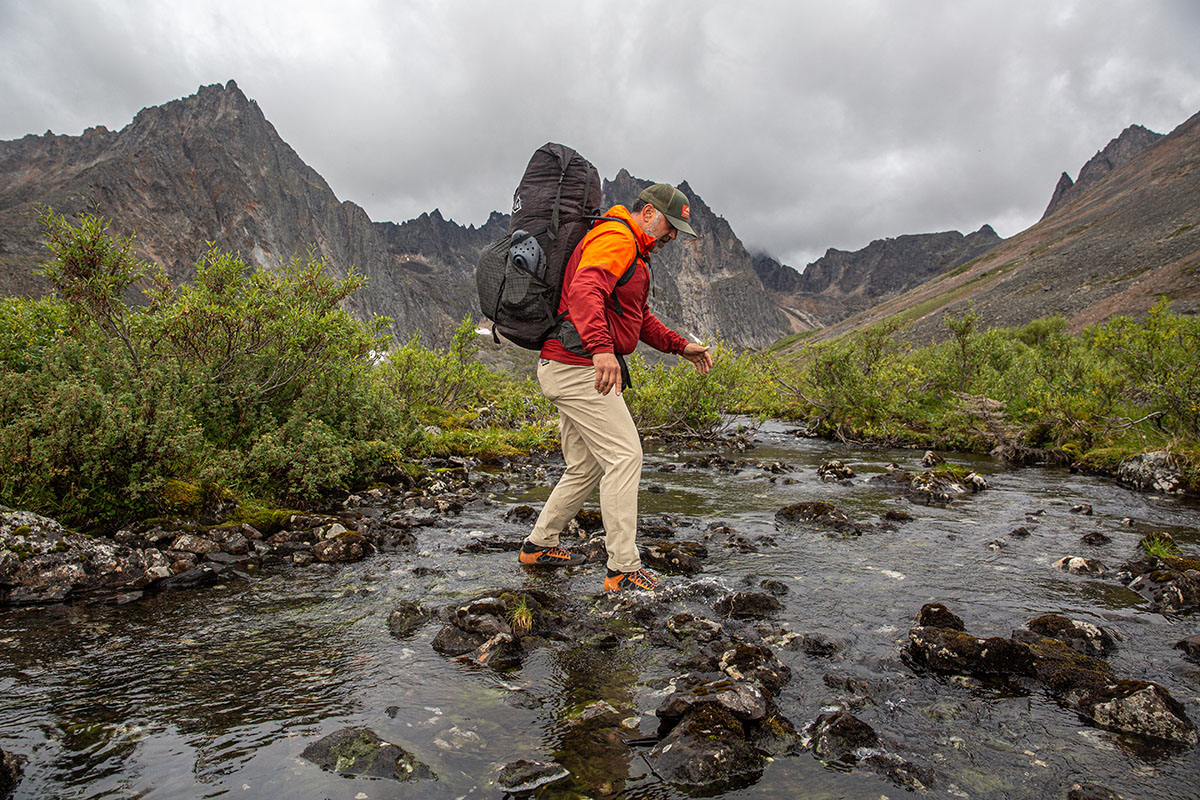
Gore’s Extended Comfort membrane is designed to breathe during exertion and in warm temperatures, and I’ve been overall pleased with the Falcon’s ventilation. This level of breathability is one of the big benefits of spending up for a high-end Gore-Tex boot: Most cheaper proprietary waterproofing technologies will keep water out, but Gore-Tex is a master at creating enough airflow to allow your feet to breathe. My feet did grow a bit clammy on hikes that reached above around 80 degrees Fahrenheit, but I’ve otherwise managed to stay comfortable and sweat-free in the boots. And importantly, the Falcon dried relatively quickly after accidental submersions, which isn’t always the case with waterproof designs (for more on the topic, check out our article: Do You Need Waterproof Hiking Shoes?).
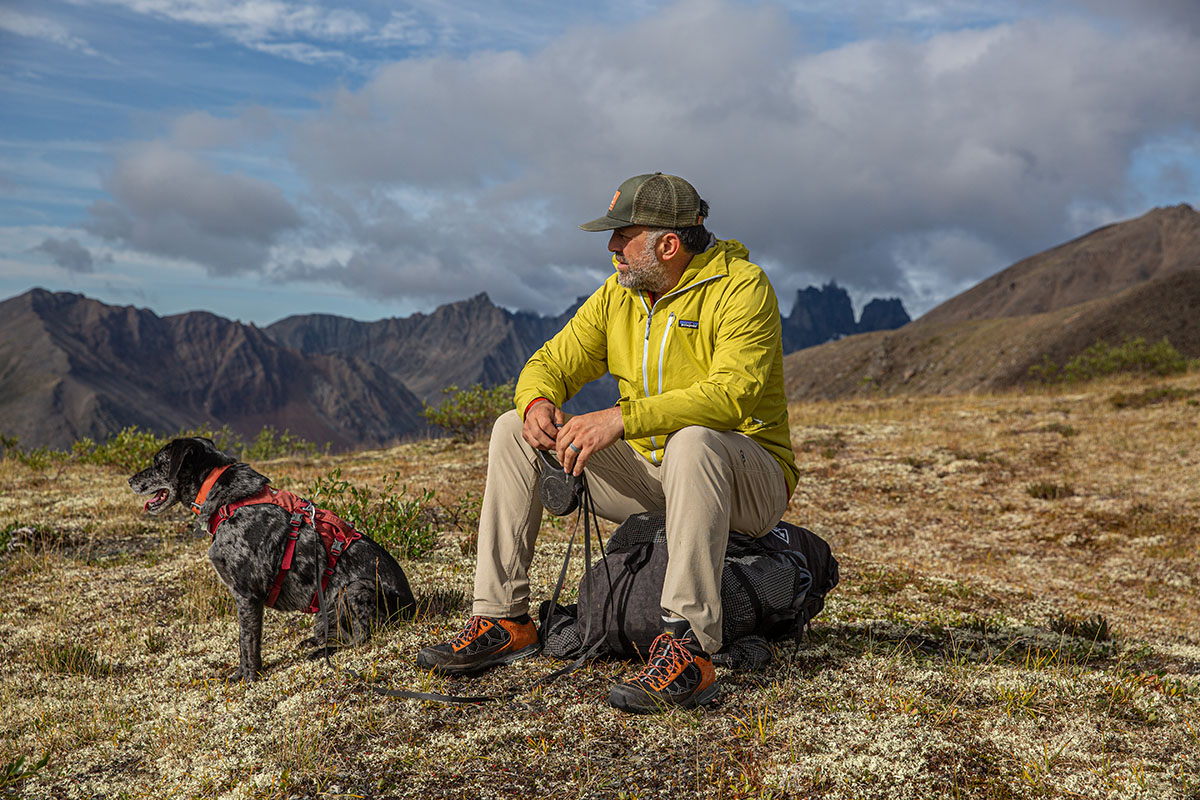
In short, everything about the Asolo Falcon Evo GV emanates quality, from the well-padded interior to the suede and nylon upper. Despite considerable abuse on relentlessly technical terrain in the Yukon, my pair is showing very little wear: The upper is free of tears and peeling, the rubber toe cap is fully intact despite frequent direct hits to rock, and the midsole feels like new after weeks of supporting my weight plus a full backpacking pack. The outsole is also in great shape, although the shallower lugs may wear down quicker than more aggressive alternatives (note: The boots can be resoled to extend their lifespan, which is a nice touch). I also have some concerns about the penultimate eyelet, which is made of fabric rather than metal, along with the exterior foam on the midsole, which is a little soft and showing some cosmetic wear. But all in all, the Falcon is impressively hardwearing for such a lightweight boot. And while entirely subjective, I think it’s decidedly good-looking with a very modern and sleek appearance.
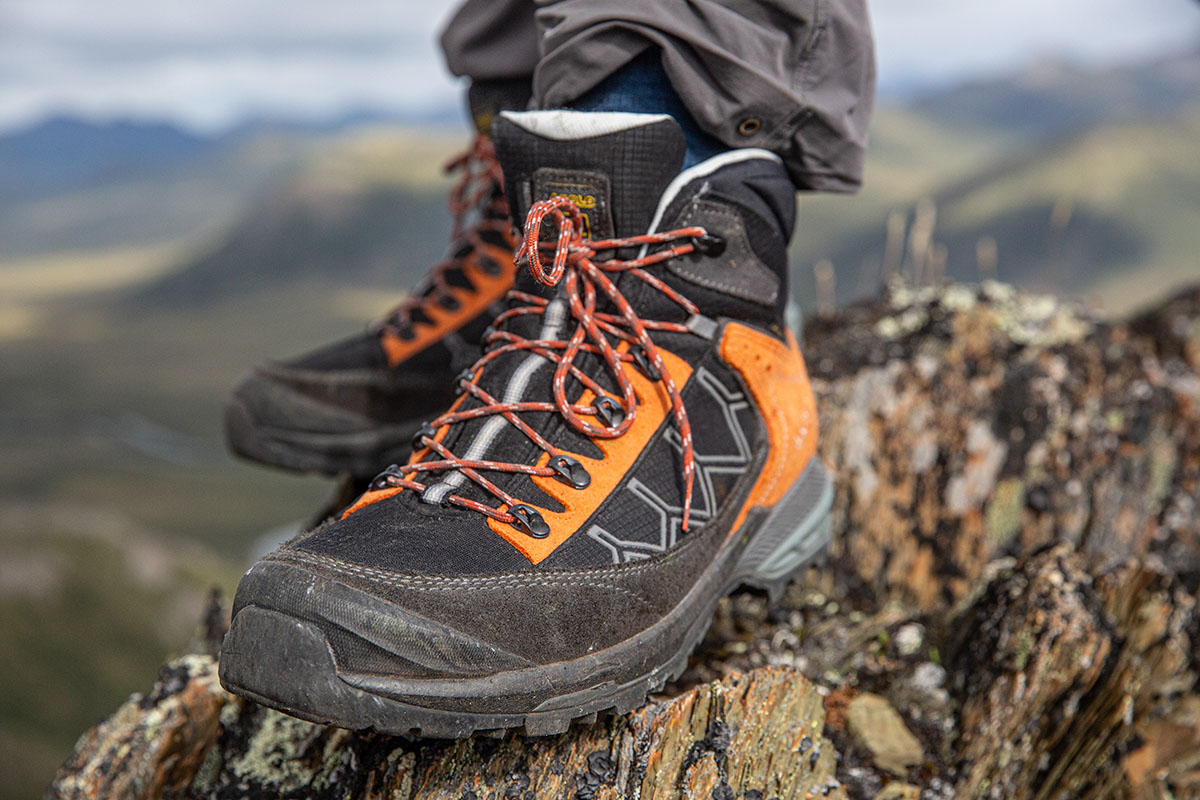
As I touched on above, this was my first experience with Asolo boots, but my usual men’s size 11 proved to be a perfect match. While the toe box was a little narrow out of the box, it did stretch out after a few hikes and ended up being spot-on once worn in. Paired with midweight hiking socks, the net result was a snug, foot-hugging feel with no pressure points, hotspots, or other friction-related issues. It’s worth noting that Asolo doesn’t offer dedicated wide sizes like some competitors, but the Falcon Evo GV strikes me as a pretty accommodating boot that should work for most average-footed hikers.
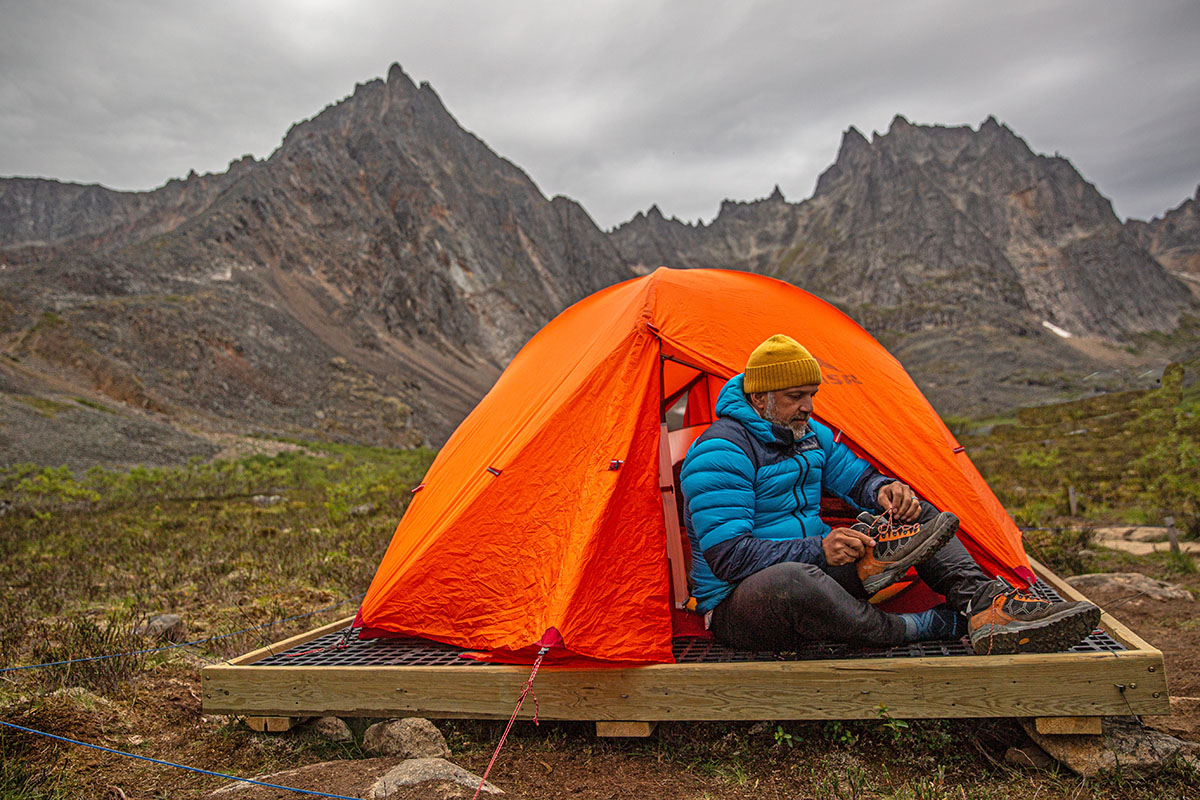
We appreciate when brands go the extra mile in creating more sustainably built products, and the latest version of the Falcon includes a couple eco-friendly touches. First, the boot is made without the use of PFAS, which stands for per- and polyfluoroalkyl substances. Also known as "forever chemicals," PFAS are under scrutiny across many industries due to their negative impacts on human health and the environment. The boots are also resolable, which is a great way to extend their lifespan while minimizing waste. Asolo partners with several cobblers throughout the U.S. and Canada, and you can read more about their resoling services here.
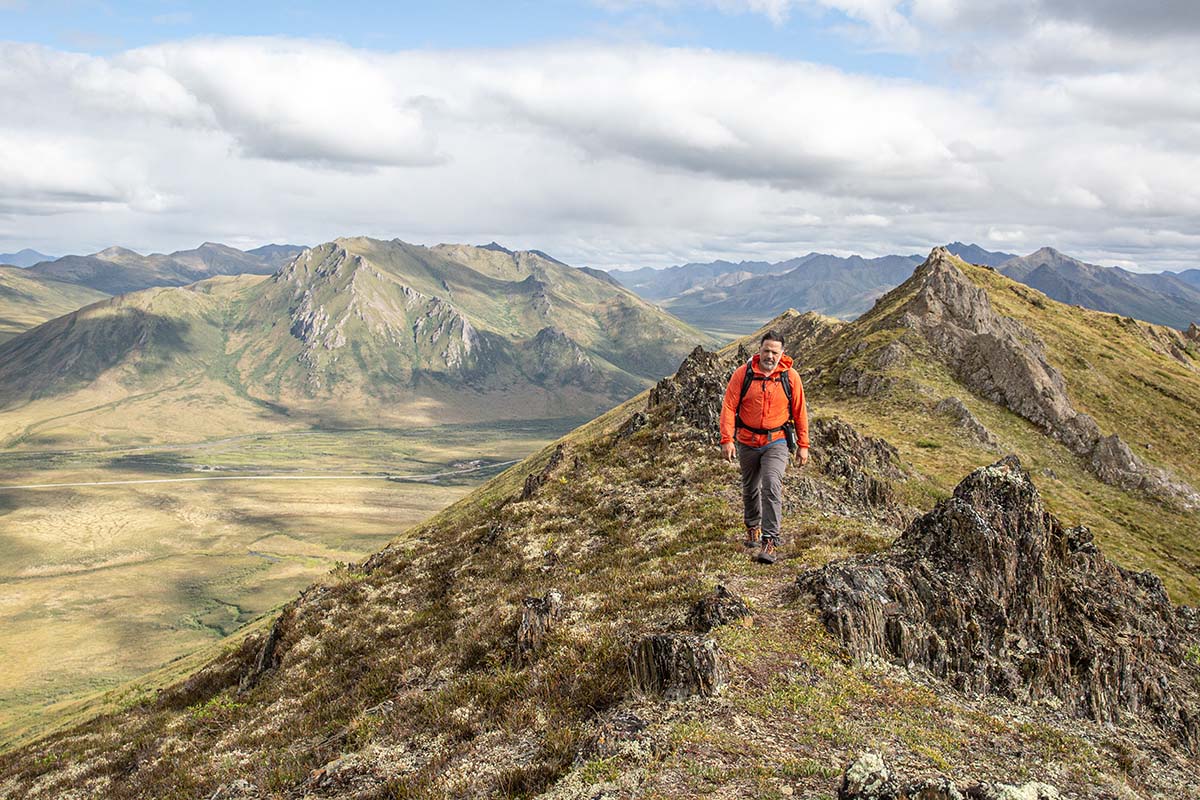
I tested the men’s Falcon Evo GV for this review, and Asolo also sells the boot in a women’s model for the same price. Comparing the two, the women’s Falcon Evo GV is offered in different colorways and comes in sizes from 6 to 10.5 (the men’s is available from 8 to 13) but retains an otherwise identical construction and feature set, including a premium Vibram outsole and proven Gore-Tex membrane. Zooming out to the wider Falcon Evo GV collection, the Falcon Evo Jacquard GV trades the flagship model’s suede upper for a synthetic textile material, which brings the price down to $240, while the Falcon Evo Nubuck GV uses more premium nubuck leather and comes in at $304. Both variations are also available in women’s models that are largely identical apart from sizing and colorway differences.
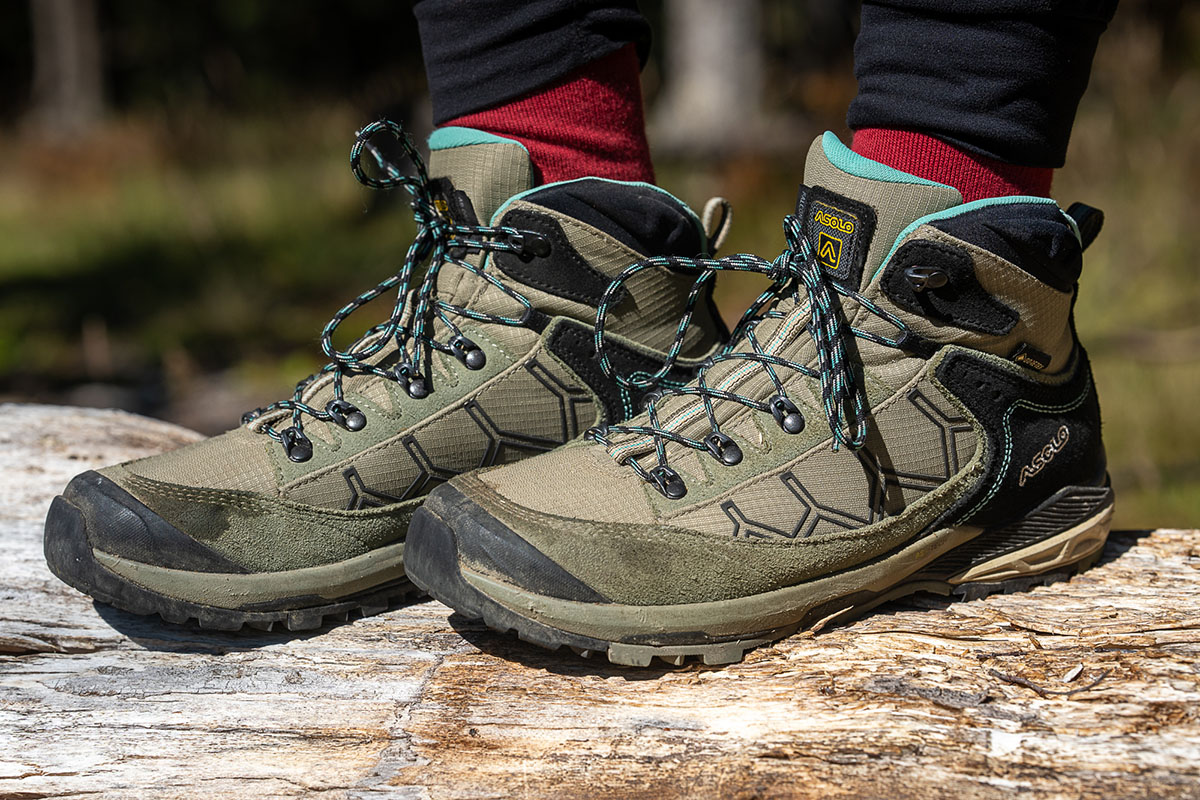
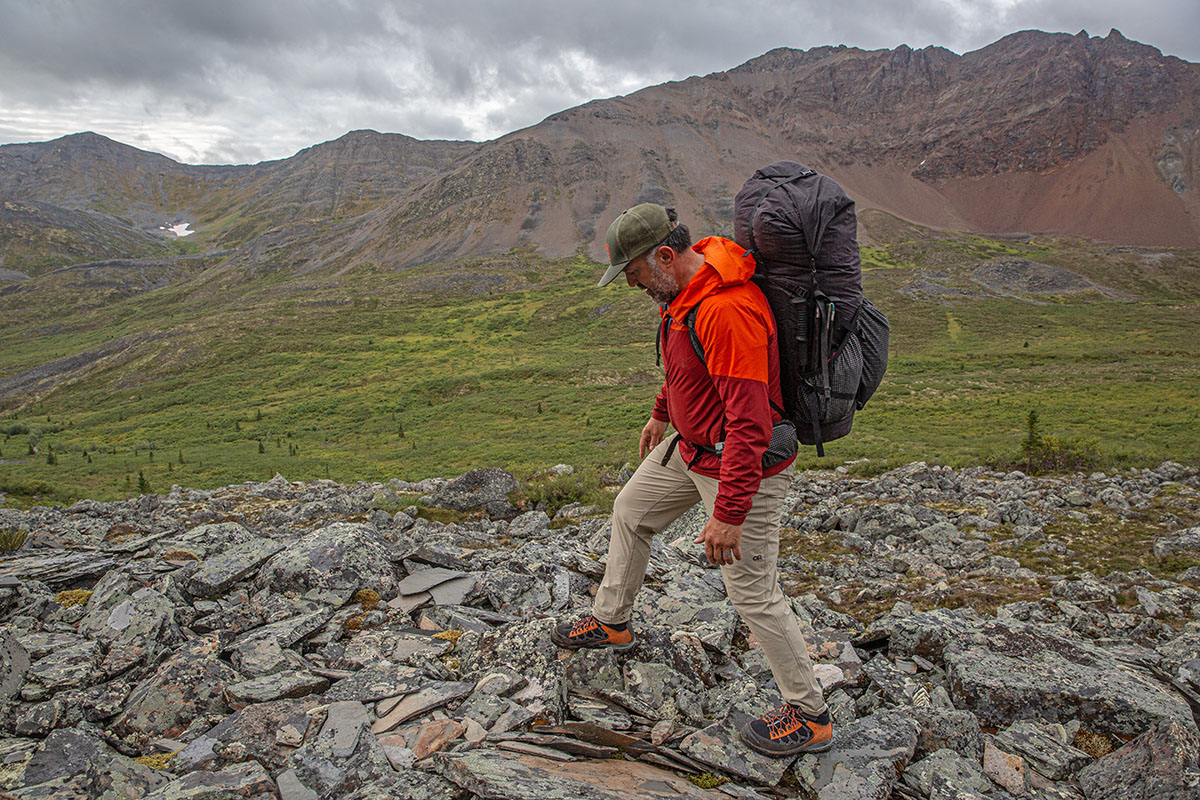
| Boot | Price | Category | Weight | Waterproof | Upper |
|---|---|---|---|---|---|
| Asolo Falcon Evo GV | $275 | Light/mid | 2 lb. | Yes (Gore-Tex) | Suede / nylon |
| La Sportiva Nucleo High II GTX | $239 | Light/mid | 2 lb. 1.6 oz. | Yes (Gore-Tex) | Nubuck leather |
| Lowa Renegade Evo GTX Mid | $265 | Light/mid | 2 lb. 2.2 oz. | Yes (Gore-Tex) | Nubuck leather |
| Arc'teryx Acrux TR GTX | $250 | Midweight | 2 lb. 6.8 oz. | Yes (Gore-Tex) | Synthetic |
| Salomon X Ultra 4 Mid GTX | $175 | Lightweight | 1 lb. 14.0 oz. | Yes (Gore-Tex) | Leather / textile |
The Asolo Falcon Evo GV punches well above its weight in terms of technical performance, and another design in this category is La Sportiva’s Nucleo High II GTX, which checks in at 2 pounds 1.6 ounces per pair. Both boots share quality and proven Gore-Tex waterproofing, tough leather builds, and grippy Vibram outsoles. In parsing out the differences, the Nucleo is cheaper at $239, uses more leather in the build, and has a slightly higher ankle for improved stability (for more, see our in-depth Nucleo High II review). In the end, both are very capable lightweight designs, and deciding between the two may come down to which fits your foot better (the Nucleo is relatively narrow, whereas the Falcon has more of a standard fit).
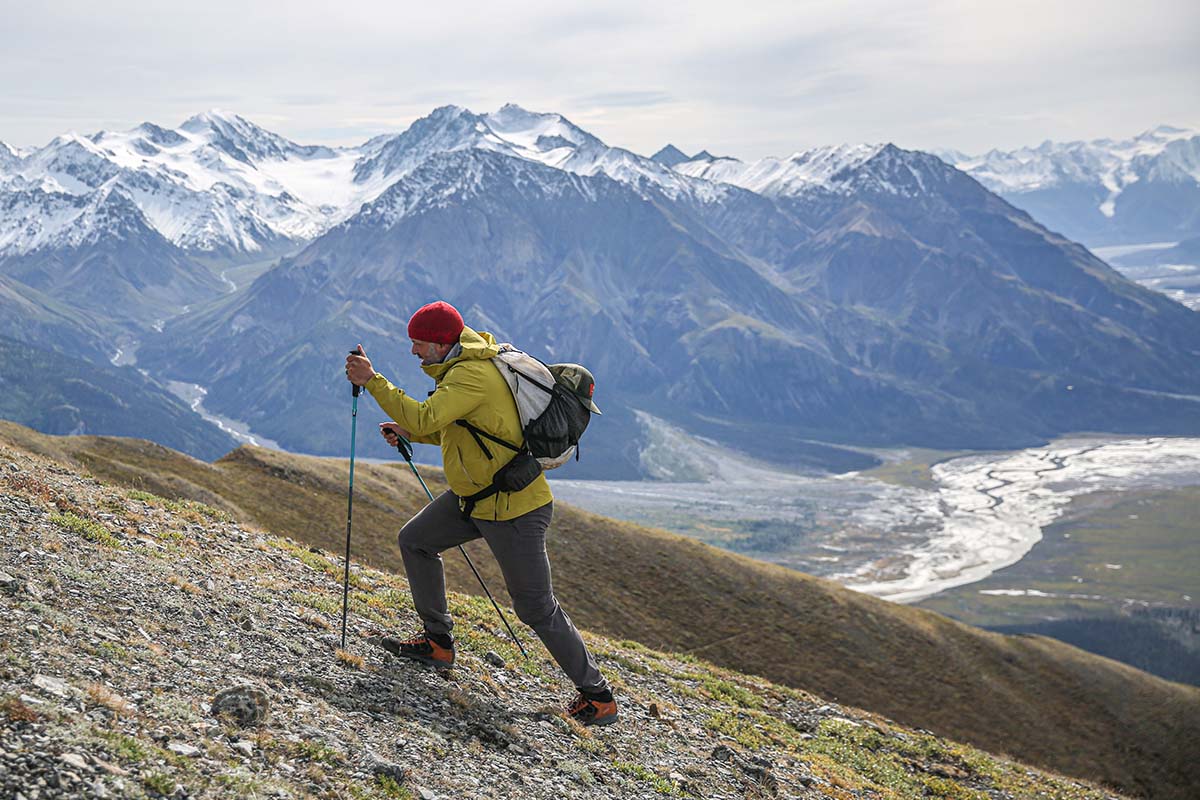
For $5 more than the Falcon Evo GV, the Lowa Renegade Evo GTX Mid is a powerhouse of a hiking boot. Despite weighing around the same at 2 pounds 2.2 ounces per pair, the Renegade offers more stability than the Falcon and also feels quite comfortable without a significant break-in period. We have found that the Renegade shaves weight by using relatively thin leather for its upper, so durability is slightly less impressive than the Falcon. But the Renegade is a tried-and-true hiking boot that has been popular for years. Bonus: It’s available in dedicated wide sizes for those with high-volume feet.
Another modern hiker to consider is Arc’teryx’s Acrux TR GTX. Like the Falcon, the Acrux features premium Gore-Tex waterproofing and a lightweight build (the Arc’teryx boot is 2 lb. 6.8 oz.) that sacrifices some support compared to beefier, all-leather hikers. Both still are capable matches for challenging terrain and heavy loads, although the Acrux is noticeably lacking in cushioning both along the upper and underfoot. All in all, the Asolo and Arc’teryx boots balance weight and performance well, but we give the nod to the Falcon for its superior comfort over long distances.
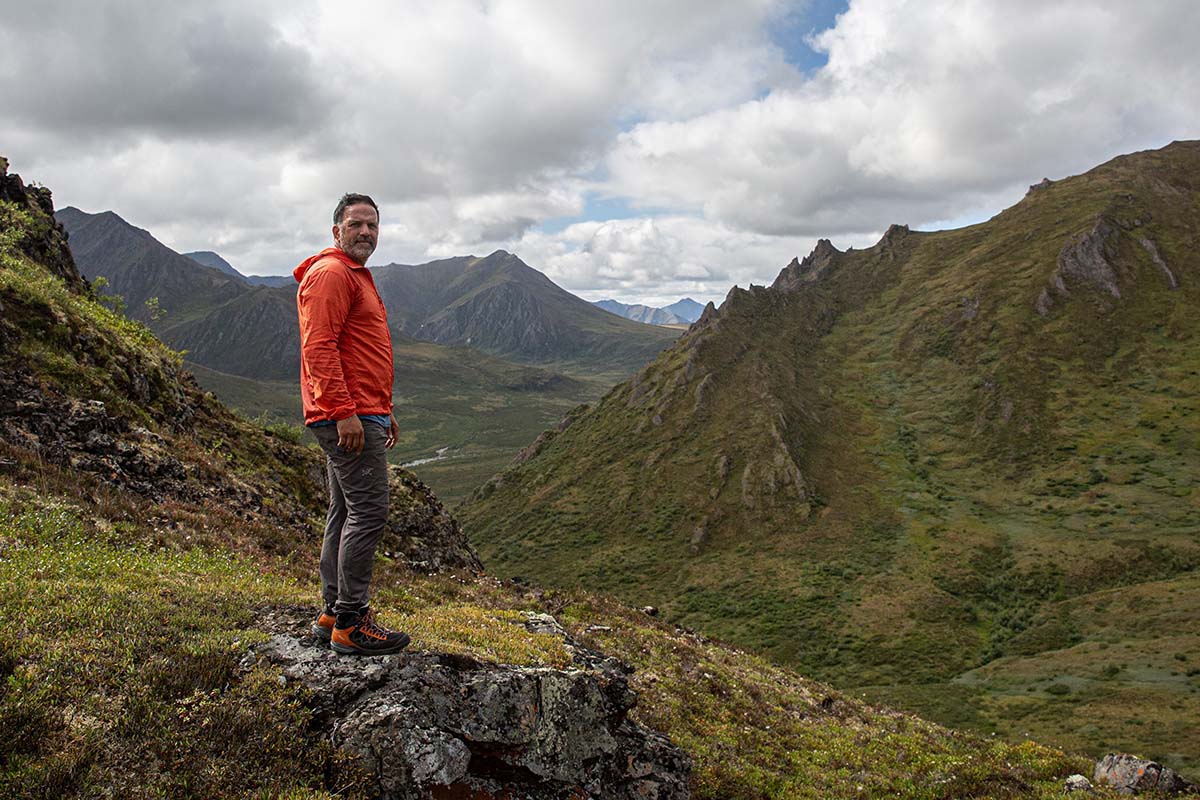
A final alternative to consider is the Salomon X Ultra 4 Mid GTX, which tops our hiking boot round-up this year. At 1 pound 14 ounces, the Salomon slightly undercuts the Falcon Evo GV in weight but retains a similar build including a waterproof and breathable Gore-Tex membrane, mid-height support, and a comfortable feel out of the box. However, we found that its low weight and impressive flexibility also translate to less support over technical terrain or with a heavy pack—here, the Asolo wins out. Many users also report subpar durability, although we’ve used and abused our pair with no major issues to date. All in all, no hiking boot is perfect, and a final decision will likely come down to how you prioritize price (the Salomon will save you a substantial $85) versus performance (the Falcon is the more technically capable option).